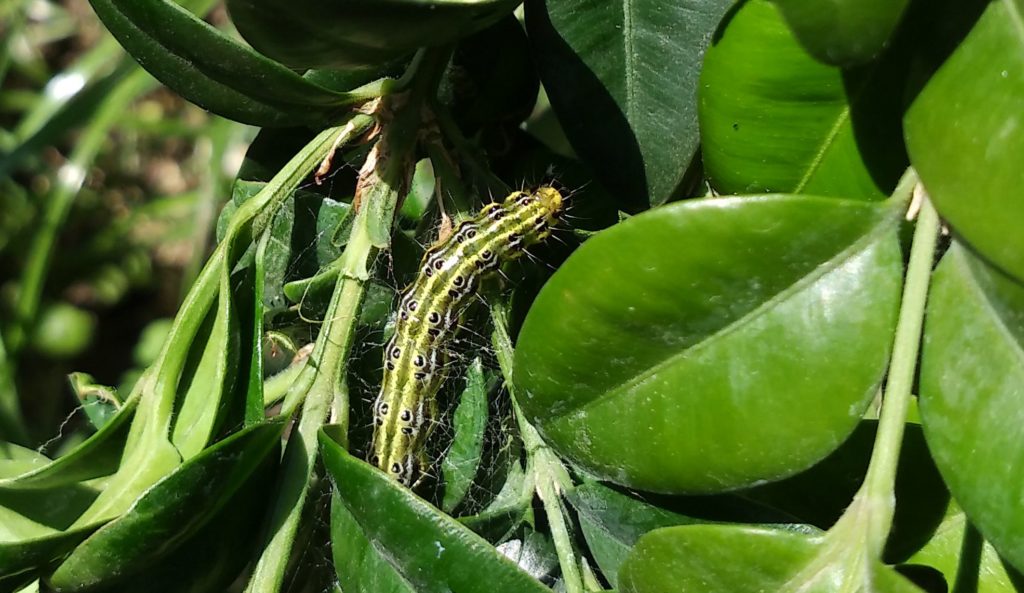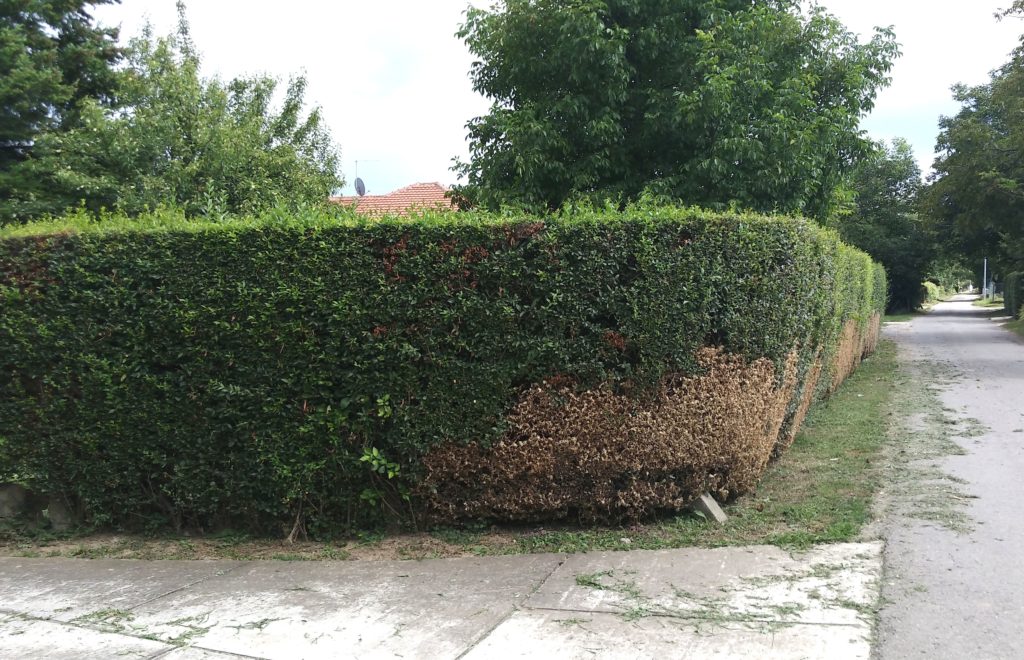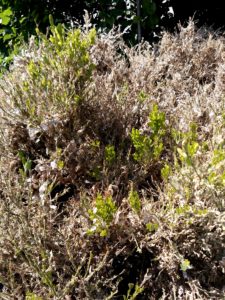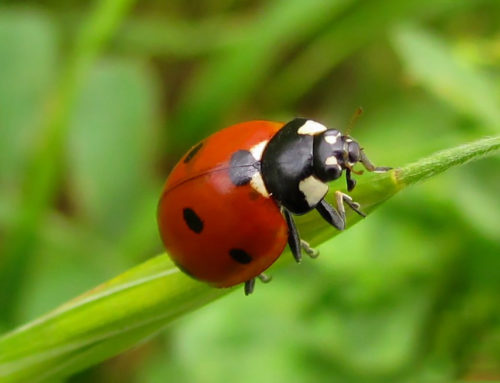Box Tree Moth – Cydalima perspectalis is here
The Box Tree Moth keeps eating its way through Europe
Globalization took its toll and last summer an uninvited Lepidoptera representative showed up in northern parts of Serbia. A moth that devours box trees and shrubs in just a couple of weeks, even days.
As of 2015 Box Tree Moth is detected in Serbia as well
For the last couple of years, box tree moths spread throughout Europe. This time going south from Croatia and Hungary to Serbia and further. Lack of natural enemies, high mobility of adults, and hard to notice eggs in container plants allowed this insect to become invasive. In its meanest manner.
Buxus sp. (mostly B. sempervirens) aka common box tree is Cydalima’s favorite host. Symptoms resemble burns, due to defoliation, usually in lower branches. But, in time the entire plant gets yellowish and dies back, with no more tissue left to photosynthesize.
Pick it, spray it, cut it!
If you react promptly and stop caterpillars eating out and webbing all the leaves, the shrub can recover (box tree grows rather slowly). Still, certain prevention and controlling measures have to be taken constantly. Usually from May to October. At least that was the case during summer seasons 2015 and 2016 in Serbia.
Mortal combat, or the nervous game?
One can always manually collect larvae and eggs on smaller plants, or use some contact pyrethroid-based insecticides. Still, if you choose chemical over biological (Bacillus sp.) or mechanical treatment, potential natural enemies, and all the “good” insects and arachnids will be lost as well. Combining different approaches might be a good solution, but prepare for a long battle with these brown-white moths. They will keep coming back, ‘till the fall comes. In spring, you can fertilize plants in order to help them retrieve lost parts, and grow new shoots. However, these great flying moths will be back next season for sure, so you should be prepared. As for other host plants – Euonymus sp. (spindle) and some Ilex sp. might be susceptible as well.

Cydalima perspectalis symptom
No enemies in this ecosystem
So, it will probably look like hide and seek: you will exterminate, or just annoy the insect, and it will keep coming back. Thanks to numerous generations and a “clear path” in our ecosystems. What’s native in Europe might
Unintentionally, this insect is spreading fast, mostly by selling contaminated planting material, or just by adults flying. However, the result is – sooner or later no box tree plant will be spared. And we should be ready for it.






